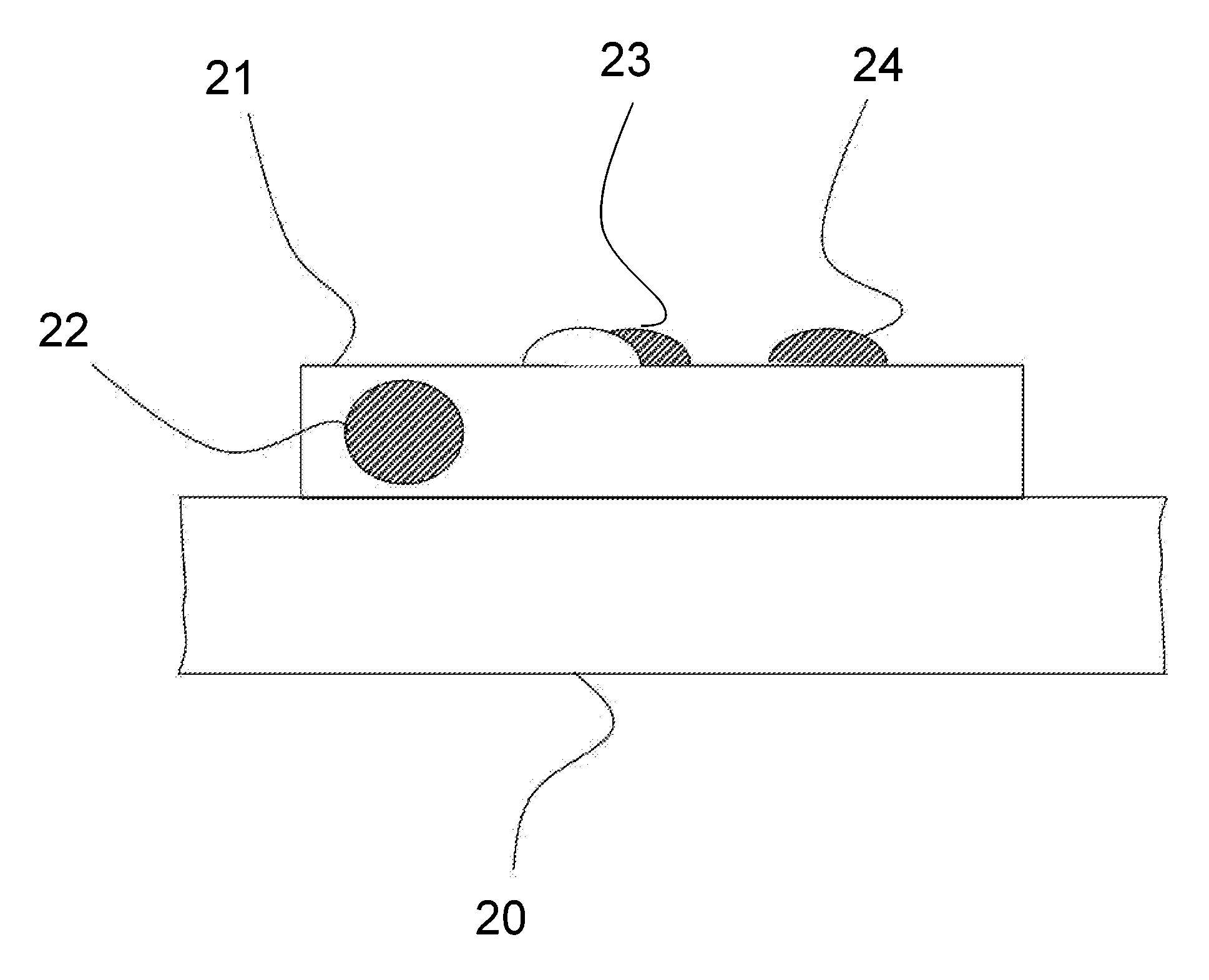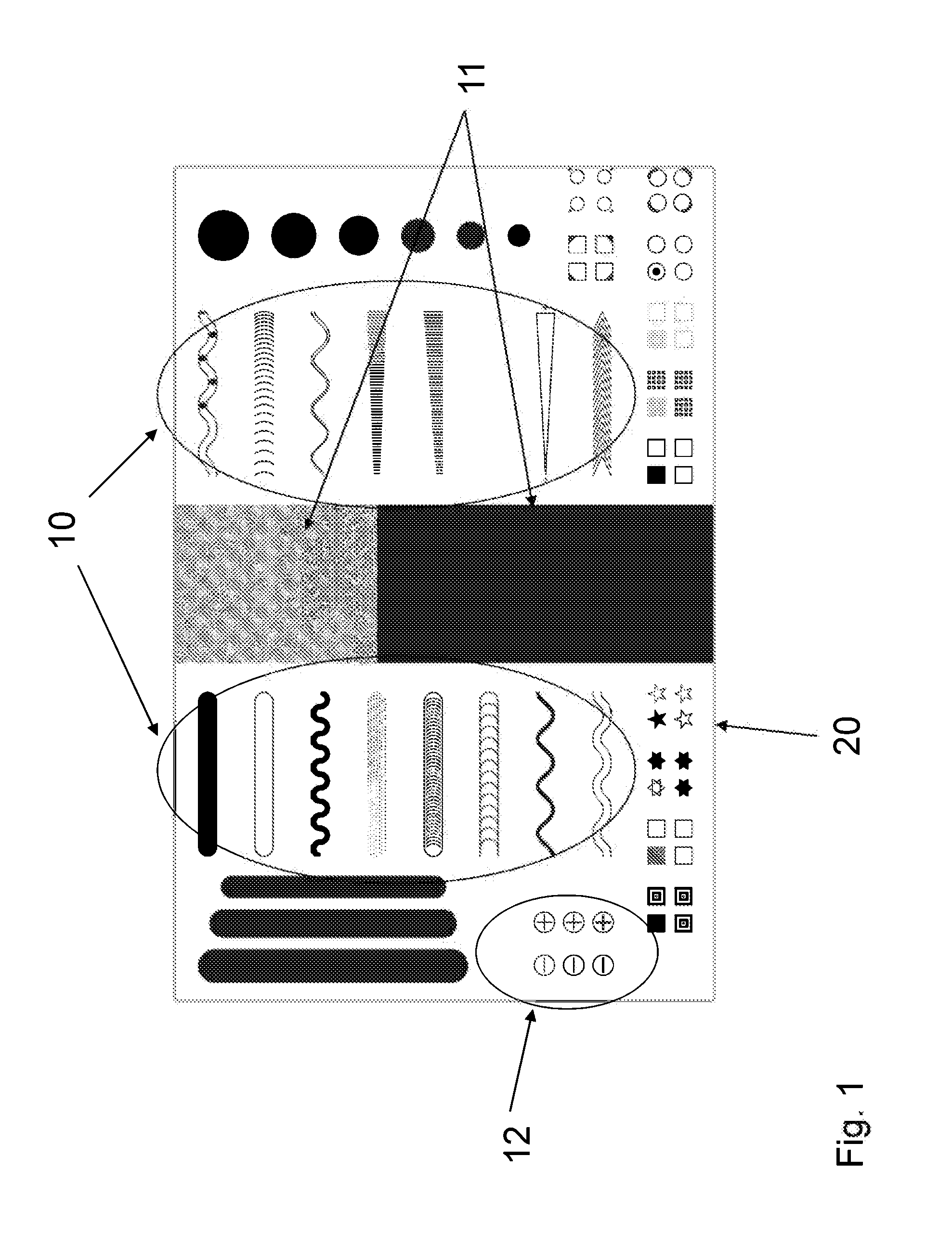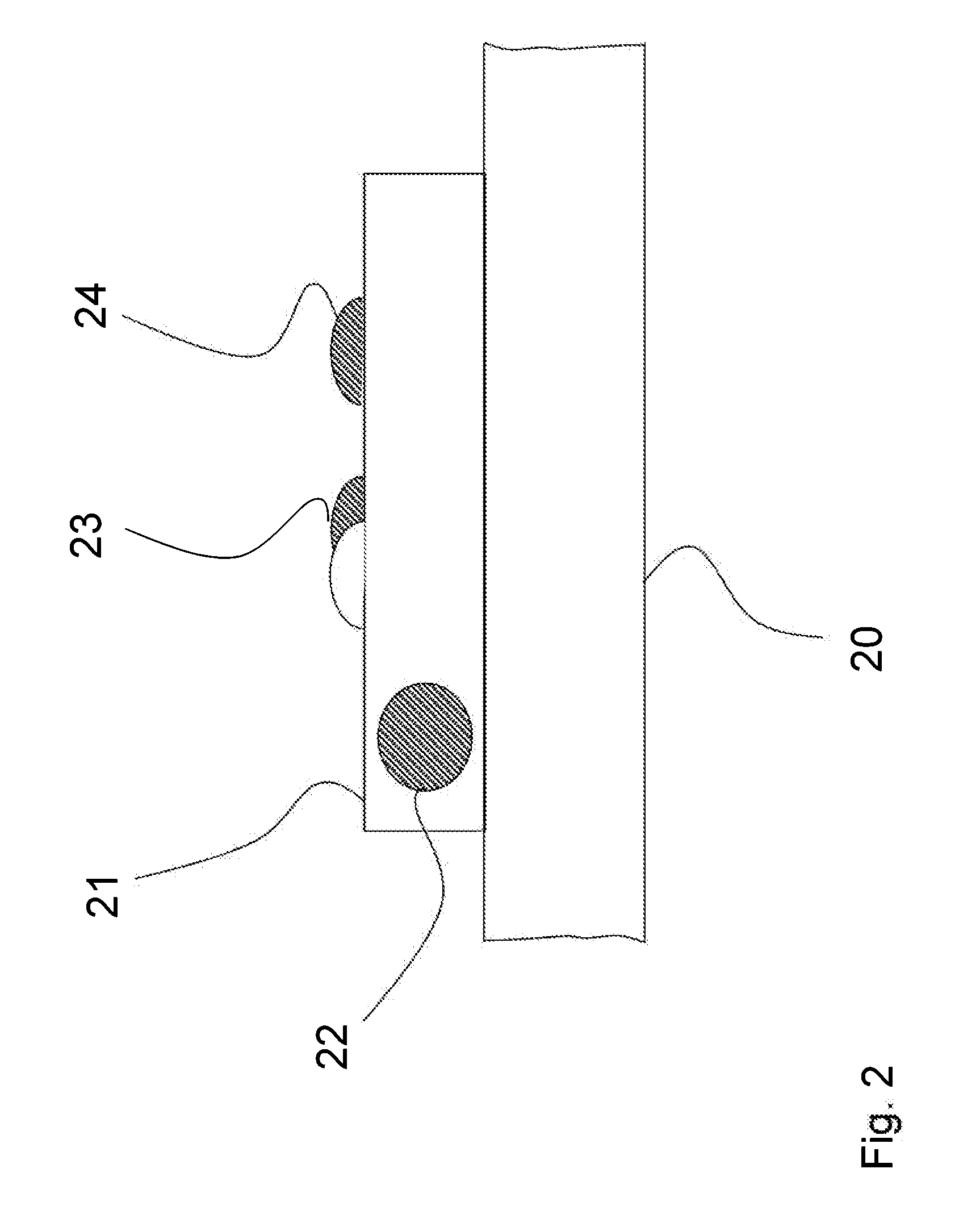Coated glass or glass ceramic substrate with haptic properties
- Summary
- Abstract
- Description
- Claims
- Application Information
AI Technical Summary
Benefits of technology
Problems solved by technology
Method used
Image
Examples
example 1
Preparation of a Layer with Velvety Haptics
[0147]19 g of glass flow forming particles of a ground glass C are mixed with 61.5 g of screen printing pasting medium and 19 g of texturing homogeneous spherical methylpolysiloxane particles with a mean particle size of 4.5 μm. The so produced paste is homogenized for 10 min using a Dispermat®.
[0148]Then, textured layers are applied on green glass by screen printing using a 140 mesh screen. The so applied layers are dried at a temperature of 180° C. for 30 min. Burning-in is accomplished at 900° C. during the ceramization of a bulk colored glass ceramic substrate.
[0149]In this way, haptic layers according to the disclosure are obtained with a velvety feel and good chemical and mechanical functional characteristics.
example 2
Preparation of a Layer with Rough Haptics (Variation A)
[0150]17 g of glass flow forming particles of a ground glass C are mixed with 60 g of screen printing pasting medium and 14 g of texturing particles of a mixture of spheres and idiomorphous (edged) particles of alkali aluminosilicate glass, with 95% thereof having a particle size of not more than 12 μm. This paste is homogenized for 10 min using a Dispermat®. Then, textured layers are applied on green glass by screen printing using a 140 mesh screen. These layers are dried at 180° C. for 30 min.
[0151]Burning-in is accomplished at about 900° C. during ceramization of the bulk colored glass ceramic.
[0152]In this way, haptic layers according to the disclosure are obtained with rough haptics and good chemical and mechanical functional characteristics.
example 3
Preparation of a Layer with Rough Haptics (Variation B)
[0153]17 g of glass flow forming particles of a ground glass C are mixed with 60 g of screen printing pasting medium and 14 g of texturing particles of a mixture of spheres and idiomorphous (edged) particles of low-alkali borosilicate glass, with 95% thereof having a particle size of not more than 24 μm.
[0154]This paste is homogenized for 10 min using a Dispermat®. Then, textured layers are applied on green glass by screen printing using a 140 mesh screen. These layers are dried at 180° C. for 30 min.
[0155]Burning-in is accomplished at about 900° C. during ceramization of the bulk colored glass ceramic.
[0156]In this way, haptic layers according to the disclosure are obtained with rough haptics and good chemical and mechanical functional characteristics.
PUM
| Property | Measurement | Unit |
|---|---|---|
| Temperature | aaaaa | aaaaa |
| Length | aaaaa | aaaaa |
| Fraction | aaaaa | aaaaa |
Abstract
Description
Claims
Application Information
 Login to View More
Login to View More - R&D
- Intellectual Property
- Life Sciences
- Materials
- Tech Scout
- Unparalleled Data Quality
- Higher Quality Content
- 60% Fewer Hallucinations
Browse by: Latest US Patents, China's latest patents, Technical Efficacy Thesaurus, Application Domain, Technology Topic, Popular Technical Reports.
© 2025 PatSnap. All rights reserved.Legal|Privacy policy|Modern Slavery Act Transparency Statement|Sitemap|About US| Contact US: help@patsnap.com



